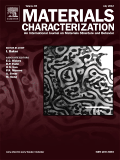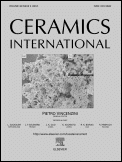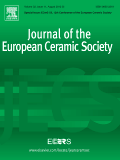
MATERIALS CHARACTERIZATION
Scope & Guideline
Pioneering Research for a Sustainable Future
Introduction
Aims and Scopes
- Materials Characterization Techniques:
The journal emphasizes the use of advanced characterization techniques such as electron microscopy, X-ray diffraction, and spectroscopy to analyze material structures at micro and nanoscale levels. - Microstructure-Property Relationships:
A core focus is on understanding how microstructural features influence the mechanical, thermal, and electrical properties of materials, aiding in the design of materials with tailored properties. - Innovative Manufacturing Methods:
Research on innovative manufacturing processes such as additive manufacturing, laser processing, and advanced welding techniques is highlighted, showcasing how these methods affect material properties. - Multiscale Modeling:
The journal addresses the integration of experimental results with multiscale modeling approaches to predict material behavior under various conditions, thus enhancing the understanding of complex materials. - Environmental and Functional Properties:
It explores the environmental effects on materials, such as corrosion resistance and thermal stability, as well as functional properties relevant to applications in electronics, aerospace, and biomedical fields.
Trending and Emerging
- High-Entropy Alloys and Composites:
Research on high-entropy alloys and composites is rapidly increasing, showcasing their unique properties and potential applications in various industries, reflecting a growing interest in materials with complex compositions. - Nanomaterials and Nanostructures:
There is a notable trend towards the characterization of nanomaterials and nanostructures, driven by their applications in electronics, energy storage, and catalysis, indicating a shift in research towards nanoscale phenomena. - Additive Manufacturing Innovations:
Studies focusing on the characterization and optimization of materials produced through additive manufacturing are trending, highlighting the need for understanding the unique properties and behaviors of these materials. - In-Situ Characterization Techniques:
Emerging in-situ characterization techniques, such as real-time monitoring of microstructural evolution during processing, are gaining traction, emphasizing the importance of understanding materials under operational conditions. - Sustainability and Green Materials:
Research on sustainable materials and eco-friendly processing methods is on the rise, reflecting a broader societal push towards environmentally responsible materials science.
Declining or Waning
- Traditional Metallography:
Research related to conventional metallographic techniques appears to be waning as more advanced and sophisticated methods gain popularity, leading to a decrease in submissions focused solely on traditional methods. - Basic Mechanical Testing:
Papers solely dedicated to basic mechanical testing without a strong focus on microstructural analysis or advanced techniques are becoming less frequent, indicating a shift towards more comprehensive studies. - Static Property Assessments:
Studies that focus only on static properties of materials without considering dynamic or time-dependent behaviors are increasingly less common, as the field moves towards more holistic approaches. - Characterization of Well-Established Materials:
There seems to be a decline in studies on well-established materials such as conventional steels or alloys, as researchers are now more inclined to explore novel materials or composites.
Similar Journals

Letters on Materials
Fostering collaboration in the evolving landscape of materials science.Letters on Materials, published by the Russian Academy of Sciences, Institute of Metals Superplasticity Problems, serves as a vital platform in the diverse field of materials science. Established in 2014 and running through 2024, this journal has carved a niche as a Q3 category publication, focusing on innovative research and developments in materials science and engineering. With its ISSN 2218-5046 and E-ISSN 2410-3535, it provides a unique opportunity for researchers and industry professionals to disseminate significant findings and theoretical advancements within the materials domain. While currently not categorized as open access, the journal maintains a global reach, promoting scientific dialogue and collaboration particularly within the Russian Federation and broader international audiences. Its placement within the 25th percentile in the Scopus rankings underscores its emerging significance, making it essential reading for anyone interested in cutting-edge materials research.

REVIEWS ON ADVANCED MATERIALS SCIENCE
Unlocking the Future of Materials ScienceREVIEWS ON ADVANCED MATERIALS SCIENCE, published by De Gruyter Poland SP Z O O, is a preeminent open-access journal dedicated to disseminating cutting-edge research in the fields of condensed matter physics, materials science, and nanoscience. Since its inception in 2003, the journal has established itself as a crucial platform for scholars and practitioners to share innovative insights and advancements, achieving a commendable Q2 ranking in its respective categories for 2023. With its headquarters in the Russian Federation, the journal is not only committed to expanding the frontiers of scientific knowledge but also emphasizes inclusivity through its open-access model, which has been in effect since 2019, enabling universal access to its high-quality content. With an impactful standing illustrated by its Scopus rankings—136th in Condensed Matter Physics and 186th in General Materials Science—REVIEWS ON ADVANCED MATERIALS SCIENCE stands as a vital resource for researchers, professionals, and students eager to engage with contemporary discussions and discoveries in materials science.

STEEL RESEARCH INTERNATIONAL
Transforming Ideas into Steel Solutions.STEEL RESEARCH INTERNATIONAL, published by WILEY-V C H VERLAG GMBH, is a premier journal that serves as a vital source of knowledge in the fields of condensed matter physics, materials chemistry, and metal and alloy research. With an ISSN of 1611-3683 and an E-ISSN of 1869-344X, this journal provides open access options that enhance its visibility and accessibility. Recognized for its scientific merit, it currently holds a Q2 ranking across multiple categories including Condensed Matter Physics and Materials Chemistry. This translates to an exceptional placement within the 64th percentile for Metals and Alloys and substantial recognition in other related fields according to Scopus rankings. By bridging theoretical concepts and practical applications, STEEL RESEARCH INTERNATIONAL aims to foster innovative research and dissemination of knowledge among researchers, professionals, and students focused on advancing the metallurgy and materials science domains. With a commitment to remain at the forefront of research from 2003 to 2024, the journal is poised to continue shaping the future of steel and alloy studies.

Ceramics International
Connecting researchers to the latest in ceramic technologies.Ceramics International is a premier journal published by ELSEVIER SCI LTD, focusing on advancing the field of materials science with a specific emphasis on ceramics and composites. With an impressive impact factor and a top-tier standing in several critical categories, including Q1 rankings in Ceramics and Composites, Electronic, Optical and Magnetic Materials, and Materials Chemistry, this journal serves as a crucial resource for researchers and professionals alike. Established in 1981, it has consistently showcased cutting-edge research in various domains, including surfaces, coatings, and process chemistry technologies, making it invaluable for those advancing theoretical and practical knowledge in these areas. While access is through subscription, the journal’s rich content, profound insights, and rigorous peer-review process ensure high-quality articles that contribute meaningfully to the scientific community. By fostering innovation and collaboration through rigorous research, Ceramics International stands out as an authoritative source for those dedicated to the evolution of materials science.

Materiali in Tehnologije
Catalyzing Innovations in Material TechnologiesMateriali in Tehnologije is a distinguished peer-reviewed journal dedicated to the field of materials science, focusing specifically on metals and polymers. Published by the Institute for Metals and Materials Technology in Slovenia, this open-access journal has been at the forefront of disseminating research findings and innovative technologies since 2000. With a current impact factor that reflects its increasing visibility in the academic community, Materiali in Tehnologije serves as an invaluable resource for researchers, professionals, and students alike, encompassing a wide array of studies in the categories of Metals and Alloys, as well as Polymers and Plastics. The journal is indexed in Scopus, highlighting its relevance and contribution to the field, particularly with its ranks of Q3 in Metals and Alloys and Q4 in Polymers and Plastics. As it converges towards 2024, Materiali in Tehnologije continues to be a pivotal platform for knowledge exchange, encouraging advancements in materials research and technology.

Acta Metallurgica Slovaca
Elevating the discourse in materials science and metallurgy.Acta Metallurgica Slovaca is a distinguished open-access journal published by SCICELL SRO that has been pivotal in the field of Materials Science and Metallurgy since its inception. With a robust commitment to disseminating high-quality research, this journal covers a wide array of topics within the scope of metals and alloys. Now indexed in Scopus, it ranks 82nd out of 176 in its category, reflecting a growing influence within the scientific community. With a quartile ranking of Q3 as of 2023, Acta Metallurgica Slovaca serves as an essential platform for researchers and professionals seeking to share innovative findings and developments in metallurgical science. Open access since 2013, it ensures that research is accessible to all, fostering collaboration and engagement across academia and industry worldwide. With a converged publication timeline extending from 2009 to 2024, this journal continues to play a crucial role in advancing knowledge and addressing contemporary challenges in the metallurgy sector.

MATERIALS SCIENCE AND TECHNOLOGY
Advancing the Frontiers of Materials InnovationMATERIALS SCIENCE AND TECHNOLOGY is a leading journal published by SAGE PUBLICATIONS INC, focusing on the interdisciplinary advancements in the field of materials science. Since its inception in 1984, the journal has provided a platform for researchers and industry professionals to present innovative findings through rigorous peer-reviewed articles. The journal holds a commendable impact factor and categorizes itself within the prestigious Q2 rank in various domains such as Condensed Matter Physics, Materials Science, Mechanical Engineering, and Mechanics of Materials according to the 2023 Quartiles. With no Open Access option, it primarily serves as a repository for in-depth studies and advancements that push the boundaries of materials engineering and application. Located in the United Kingdom, at 2455 TELLER RD, THOUSAND OAKS, CA 91320, the journal continues to attract a global readership, making it indispensable for academics, researchers, and students who aim to stay at the forefront of materials innovation.

Journal of the European Ceramic Society
Driving Progress in Ceramic ResearchThe Journal of the European Ceramic Society, published by Elsevier, is a premier academic periodical dedicated to the cutting-edge advancements in the fields of ceramics and composites, as well as materials chemistry. With an impressive impact factor that places it in the top quartile (Q1) of its category, it ranks #33 out of 317 in Materials Science and #16 out of 127 in Ceramics and Composites, showcasing its strong influence in the scientific community. Established in 1989 and set to converge until 2025, this journal serves as a critical platform for researchers and professionals to disseminate their findings, share ideas, and foster collaboration in the rapidly evolving area of ceramic materials. Although it does not offer Open Access options, the journal ensures rigorous peer review and maintains high standards for publication, making it an essential resource for students, academics, and industry experts who are pushing the boundaries of material science.

AIMS Materials Science
Illuminating the Path of Materials InnovationAIMS Materials Science is an esteemed open-access journal dedicated to advancing the field of materials science. Published by the American Institute of Mathematical Sciences (AIMS), this journal has been a vital resource for researchers, professionals, and students since its inception in 2014. With an ISSN of 2372-0468 and an E-ISSN of 2372-0484, it focuses on disseminating high-quality research in materials science, ranging from general materials science to cutting-edge advancements in innovative materials applications. Currently ranked Q3 in the 2023 Scopus Materials Science (miscellaneous) category, with a ranking of 253/463, AIMS Materials Science strives to provide an open forum for scholarly dialogue and collaboration, ensuring valuable insights are accessible to the global scientific community. The journal's commitment to open access enhances its visibility and reach, further promoting impactful research in this dynamic field.

INTERNATIONAL JOURNAL OF REFRACTORY METALS & HARD MATERIALS
Advancing the frontiers of materials science.INTERNATIONAL JOURNAL OF REFRACTORY METALS & HARD MATERIALS, an esteemed publication by Elsevier Science Ltd, stands at the forefront of materials research, focusing on the development and application of refractory metals and hard materials in various engineering fields. With an impressive impact factor and recognition as a Q1 journal across several categories including Ceramics and Composites, Materials Chemistry, and Mechanical Engineering, it serves as a vital resource for researchers, professionals, and students alike. The journal has been continuously publishing high-quality research since its inception in 1982, with a convergence of developments spanning through to 2024. Its Scopus rankings further emphasize its significance, boasting ranks in the top percentiles of relevant scientific fields. Although it operates under a subscription model, the depth and rigor of the research published within its pages ensures that it remains an invaluable tool for those pursuing innovation and exploration in materials science.